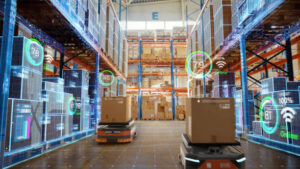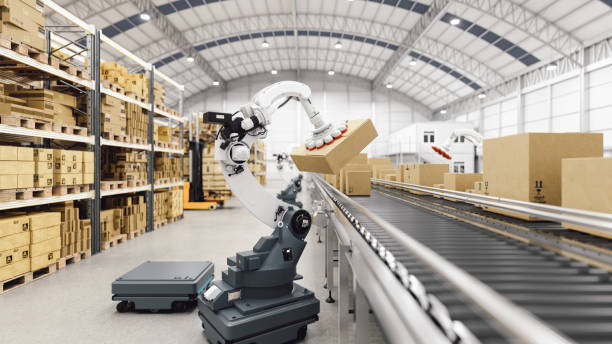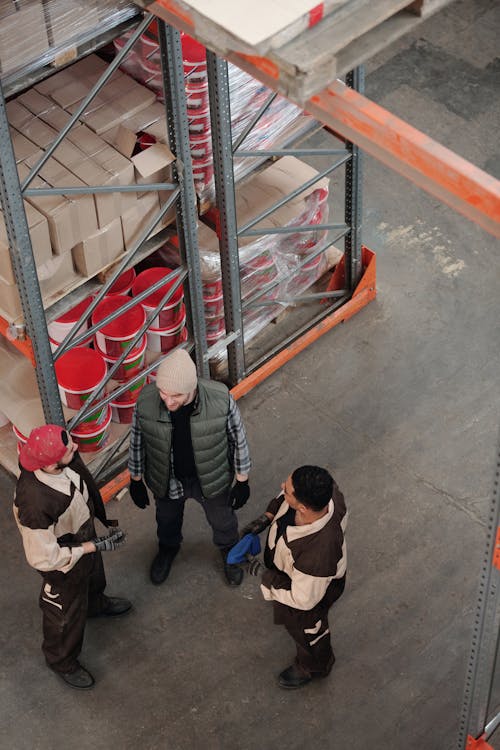Free TMS Software and Advancements in Smart Port Technology.
Enhancing Efficiency with Free TMS Software and Reducing Bottlenecks in Cargo Handling.
The logistics and transportation industry all over the world is in the process of changing due to the innovations in smart port solutions. Thus, with the rising need to enhance the cargo movement processes, ports and terminals globally are increasingly seeking new solutions to dismantle the bottlenecks involved. In this article, the state of the art smart port technology is discussed with focus on how they have transformed port operations and minimized delays in the handling of cargo. We will also briefly explain some of the related topics including such as trucking automation investment, insurance for new authority, freight brokers and other related terms.
The Evolution of Smart Ports
Smart ports incorporate new technologies in the management of the port logistics so as to increase port throughput and decrease operating costs. Some of them are Automation, Data analytical tools, and Real-time tracking systems that are essential in the development of ports.
1. Automation and Robotics: Automation is one of the innovative concepts adopted in smart port technology. There is a growing adoption of robotic systems and automated equipment in handling of cargo at the ports. Computer-controlled cranes, guided vehicles, as well as systems of manipulation of containers are taking human labor out of circulation and raising the speed of operations.
Trucking automation investment is also a key factor. Automation technologies related to the transport of trucks as well as the cargo handling and management systems improve the efficiency of the operations carried out in the firms and minimize the possibility of human mistakes. This includes automation of the process of loading and unloading of trucks by use of effective automated systems that reduce congestion times and are safe.
2. Data Analytics and IOT
Many port governing bodies are embracing the Internet of Things and data analytics as new ways of managing them. It gathers timely information about cargo; condition and status of equipment; and the prevailing climatic conditions among other factors from IoT sensors and devices. Cognate data is used for better decision making in ports, for better prediction of when maintenance is required and so on.
For instance, open-source TMS software, that is possible with IoT integration, may help logistics managers to get more profound information on the movements of cargoes, and therefore plan the potential routes more efficiently and with minimal probable downtime.
3. Real-Time Tracking and Visibility
A highlighted feature in improved tracking technology opens real-time tracking of the movement of cargo. GPS and RFID technologies allow the tracking of containers and shipments within the chain of the loading and delivery of the shipment. This has been made possible through this kind of transparency and thus prevents congestion in the processing of cargos.
The height poles for pilot cars and high pole pilot cars enable the cargo, especially the oversized and the hazardous materials to be handled and transported safely within the port areas. This helps to avoid delay that may arise as a result of a change in regulatory rules or changes on safety concerns.
4. Advanced Cargo Handling Systems
Smart ports are already using automated stacking cranes, conveyor belts and other techniques in the movement of goods. These systems enhance efficiency since the loading, unloading and organizing the containers in a proper way do not require handling by the workers.
Hazmat freight forwarder services are also implementing technology to ensure an effective manner of dealing with the issues of risky materials. That is why specialized systems are useful because they provide methods for safe and efficient handling of hazardous cargo, according to the legislation.
5. Integration with Supply Chain Partners
Contemporary ports are becoming more and more connected to other firms in the supply chain for enhancing general performance. Port authorities can therefore improve communication with such players as freight brokers, shipping lines, and trucking companies.
For instance, freight broker Ontario services are vital in the enhancement of flow of cargos and as well organizational flow of logistics. In essence, the ports can integrate with brokers to eliminate the middleman and also filter their bookings to honor their booking time for the delivery of goods.

How Smart Port Technology Enhances Efficiency and Reduces Bottlenecks
- Faster Processing Times
Automobile technology and sophisticated systems used to handle cargos make the process of handling a lot quicker at ports. Some of them include automation of cranes and vehicles that help in the transporting of containers thereby reducing time taken by ships in the port. This results in reduction in turnaround time and increased capacity.
For this efficiency, IOT also adds to the fact that Trucking automation passive income. Technology in transportation companies brings order in transferring cargo hence the reduction of time lost in congestion in ports or other locations.
- Reduced Operational Costs
Solutions in smart ports enhance efficiency hence utilize the equipment efficiently by cutting on manpower. Automation saves labor from engaging in strenuous exercises hence reduces the expenses of labor and also removes human element chances of error.
In addition, big data analysis assists in the determination of time intervals for carrying out equipment maintenance and thereby minimizes repair expenses and time lost due to maintenance. Ports can also utilize trucking insurance for new authority in order to safeguard its assets as well as mitigate risks in the most efficient manner possible.
- Enhanced Safety and Compliance
From the use of height poles and high pole pilot cars we find that the over, elongated or hazardous cargo is in respect of the safety standards as required. This in turn helps minimize accidents while at the same time checking that the cargo handling operations are compliant with the laid down safety measures.
To this, hazmat freight forwarder services add safety by getting specialized methods of dealing with as well as moving dangerous products. These services help in the control and handling of hazardous goods in order to eliminate or minimize any risks that may occur.
- Improved Supply Chain Coordination
Implementation of relationship management with supply chain members reduces gaps in the process of managing the supply chain. Real-time tracking and visibility create more order and control in port operations, shipping line, freight broker and trucking companies.
Freight broker Ontario services make sure that communication and especially bookings are easy and that cargo is moved around as preferred with as much delay as is possible. It results in a supply chain which is more efficient than before and it also reduces the number of barriers or delays.
- Better Resource Management
In resource management, data analytics and IoT sensors assist the ports to do the same efficiently. Daily tracking of the usage of equipment, states of the cargoes, and climatic conditions within the ports hence, allows the ports to enhance resource utilization and minimize the utilization of unnecessary resources.
Challenges and Considerations
While smart port technology offers numerous benefits, there are also challenges and considerations that ports must address:
- High Initial Costs
Smart port technologies are capital intensive since there is usually a huge amount of investment when they are being put in place. Ports should be able to set budget limits towards automation systems, IoT devices, data analysis platforms and other technologies. Although such investments are likely to deliver long-term cost savings, initial capital outlays can represent a significant sanction for several ports.
- Integration Complexity
The adoption of new technologies often poses a challenge with regards to the incorporation of these new technologies with basic port facilities. Ports also need to ensure compatibility of new systems with existing systems and supporting processes. This may prove to be very exhaustive and may at times call for consultations with the technology providers.
- Cybersecurity Risks
As ports integrate more increasingly into digital technology, they are at the same time open to cyber threats. The authorities of ports must pay special attention to cybersecurity as sensitive data have to be secured and the work of systems cannot be at risk.
- Training and Workforce Adaptation
The automation and the implementation of sophisticated equipment are inevitable hence training of port personnel. Employees need to be empowered with knowledge on how to use new systems and or maintain them. Managers aboard ports need to set aside funds and develop training programmes in order to facilitate a positive transition to the new technologies.
Conclusion
Smart port technology is fast evolving in the market and currently rolling over the logistics and transportation sector to minimize congestion in the cargo business. This transformation includes but is not limited to automation, data analytics, real-time tracking, and advanced systems of cargo handling. That way ports can increase capacity, reduce overall throughput time, increase safety measures and also better coordinate the supply chain management.
Although, there are certain difficulties that arise when it comes to implementing smart port technologies, the advantages are great when compared to the disadvantages. These developments mean that ports that adopt such measures shall be geared to meet the growing trends in the international market on logistics and hence shall remain relevant in the market.
There are many areas of the modern industry and its growing need to adapt to new technologies to which ports must remain relevant. By doing so, they can ensure that they remain at the forefront of innovation and continue to deliver efficient, reliable cargo handling solutions.





